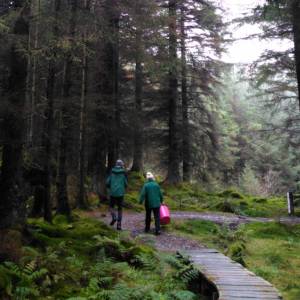Turning for the Screwpine
Forest re-generation is something that is of crucial importance worldwide. Every type of forest habitat is under threat as land is cleared for housing, industry and agriculture.
Rachel and Russell are part of a slowly growing movement to re-generate their own land – getting rid of non-native plants such as the viciously thorned Chinee Apple Ziziphus mauritania and invasive Snake Weed Stachytarpheta sp - and replanting native species. But regenerating habitat is a slow business and the periphery of the National Park is rapidly being divided into housing plots. Not everyone cares about habitat loss and some still feel the bush is an undesirable commodity.
Pandanus trees are an integral part of woodland Oz and come in many shapes and sub-species. In this area it is Screwpine pandanus spiralis that seems to be dominant, found by rocky watercourses throughout the forest where they will get a good drink in the rainy season (c Nov-March). It is named for the way that its leaves develop around the trunk in a spiral.
Through the scheme run by Queensland Parks and Wildlife R&R get some advice and an ID service (although no funding!) on how to manage their land to the best advantage. They recently planted a gully with young pandanus but the severe dry conditions this year mean that they are in danger of shrivelling up. One of my jobs has been to deep water them and other stressed plants and give them some seaweed feed to give them a boost to survive until the rains. They look quite jolly little plants from a distance, but each leaf has a loosely barbed edge. Running a hacksaw with detachable teeth along the back of your hand describes the sensation when you push in too closely with the watering can. There are a few minutes afterwards for pulling the barbs out with your teeth, spitting so as not to ingest them and watching the upwelling of dot-to-dot points of blood. So, for this and many other reasons, despite becoming red, sweaty and roasting, a long-sleeved shirt, trousers and a hat are absolutely necessary. For smaller (and possibly armour plated) wildlife the overhanging dead leaves provide a well defended nesting and roosting place.
As with most things in the tropics Screwpines have their uses – the leaves can be cut into strips and woven. They also have a sweet scent and flavour. If mashed and placed on forehead, soothing for headaches. Seeds – need a hacksaw to get into - can be ground into flour, only rats and black cockatoo can gnaw through them.
- 0
- 0
- Olympus VG160,X990,D745
- 1/60
- f/2.8
- 5mm
- 80

Comments
Sign in or get an account to comment.


